Sponsored Media Trip
After visiting two UNESCO sites during my Vietnam media trip last year, I had a recent opportunity to add two more to the list when I visited China a few weeks ago. As part of the media trip with Tigerair, I toured the cities of Wuxi and Suzhou, ahead of the airline’s inaugural direct flight to Wuxi from Singapore. Tigerair is currently the only airline that flies from Singapore directly to this city. The low-cost carrier flies to Wuxi, its 10th flight destination, four times weekly since 28 April 2016.

Since the trip was done BEFORE Tigerair's first flight to Wuxi, a flight from Singapore to Ningbo (5hours 10minutes) was required, followed by a 3.5 hours' drive from Ningbo Airport to Wuxi city. That was a total of 8.5 hours of travel time. However, it will take just 5hours 40minutes flight time from Singapore to Wuxi, via the direct flight with Tigerair. This shaves off travel time for travellers!

** ABOUT WUXI AND SUZHOU **
Located in the Jiangsu province in China, Wuxi (无锡) and Suzhou (苏州) have a combined population of 17 million and totafl GDP of more than RMB 2 trillion. They are important cities in the Yangtze River Delta (YRD) Economic Zone, acting as the pillar for China’s economic growth.
In 1994, together with the China government, Singapore had established the China-Singapore Suzhou Industrial Park, concentrating on high-tech, pharmaceutical and healthcare. Given the low living/operating costs, good transportation network and close proximity to Shanghai, Wuxi and Suzhou are ideal places to set up manufacturing plants and do businesses at.
In terms of the cities’ tourism, visitors flock to Wuxi and Suzhou to get scenic views along China’s second largest freshwater lake – Lake Taihu. Travellers also get to visit temples and classical gardens during their visit. Wuxi is known as an old ancient city, made famous by the Romance of the Three Kingdoms TV Series. Wuxi is known for its charming natural beauty embraced by picturesque landscapes. On the other hand, Suzhou was referred as the ‘Venice of the East’ by the great Venetian traveller Marco Polo and has the world’s longest canal in the world passing through the city.
The draw of their historical culture and architectural, along with the UNESCO sites, led to Wuxi and Suzhou being ‘must-visit’ cities. Since it takes less than one hour by car to travel between the two cities, do include Suzhou in your travel itinerary when you fly to Wuxi via Tigerair.
** WHERE TO GO IN WUXI, CHINA **
(1) Mount Lingshan Grand Buddha Scenic Area
Being a popular tourist attraction well-known among the citizens of China as well as foreign visitors, the Mount Lingshan Scenic Spot (灵山胜境) is a Buddhist cultural park, located 25km from the metropolitan areas in Wuxi. It is most famous for the world’s largest bronze Buddha statue and Sakyamuni bathing ceremony.
Map of Mount Lingshan Scenic Spot
Entrance of Mount Lingshan Scenic Spot
The lush greenery and mini parks are filled with a paramount amount of beauty which only Mother Nature is able to bestow it with. Coupled with magnificently-built statues and buildings of various Buddhist origins, this 30-hectures park attracts nearly 2 million worldwide visitors annually.
Peach Blossoms in Bloom!
Found a quaint and beautiful mini garden
And then a quick self-portrait photo shoot happened
Elated to have come across this and capture it
- A monk cycling among the greenery in the park.
Wishing charms
Tram services are available too, to save you time from walking.
Do give yourself one full day to finish touring this whole place.
Otherwise, refer to below for my recommendations on the the ‘MUST-SEE’ attractions at Mount Lingshan Scenic Spot, and all you need is one morning.
Top 3 places to go at Mount Lingshan Scenic Spot:
(a) Grand Buddha
(b) Buddha Bathing Ceremony site
(c) Brahma Palace
(a) GRAND BUDDHA (灵山大佛)
Standing at an amazing height of 88-metres and weighing 700 tons (~636,000 KG), the Grand Buddha certainly makes its majestic presence felt from afar. The Grand Buddha stands on a lotus pedestal, of which both were made using 2,000 bronze metal sheets.
To get to the lotus where the Grand Buddha stands on, one must climb the ‘Ascending Cloud Avenue’ that consists of 216 stairs standing for 108 troubles and 108 wishes. Upon reaching the base, enter into the museum and take an elevator to the lotus pedestal (housing a three-floored museum).
The tour guide advised against going up the lotus pedestal due to time constraint as there would be a long queue for the elevator to take visitors to the lotus platform. However, being the curious traveller that I have always been, I decided to do so in a snap-snap manner --- I dashed through corridors of the museum (glancing at the historic artifacts and states on display meantime) to get to the elevator queue. The total queuing time was about 15 minutes, jostling with many other visitors. Upon reaching the lotus platform, I had a splendid view of the surrounding, and spent some time taking photos. After that, I dashed out again. I had no regrets doing what I did and running madly... I strongly recommend heading up to the lotus pedestal!
Notice the inscriptions on the lotus petals?
These are the names of people who donated a significant sum for the building of the Grand Buddha.
This picture clearly shows the size of the status. Makes me feel that us humans are so minuscule.
The tour guide advised against going up the lotus pedestal due to time constraint as there would be a long queue for the elevator to take visitors to the lotus platform. However, being the curious traveller that I have always been, I decided to do so in a snap-snap manner --- I dashed through corridors of the museum (glancing at the historic artifacts and states on display meantime) to get to the elevator queue. The total queuing time was about 15 minutes, jostling with many other visitors. Upon reaching the lotus platform, I had a splendid view of the surrounding, and spent some time taking photos. After that, I dashed out again. I had no regrets doing what I did and running madly... I strongly recommend heading up to the lotus pedestal!
Look up and admire the imposing figure of the Grand Buddha
It is believed that touching the feet of the Grand Buddha will bring you safety and luck.
The hair of the Buddha statue (ie. Kaparda coils) was designed with an advanced lightning protection system to safeguard the statue. Be impressed with the high technologies incorporated so that the statue is wind-proof, quake-proof and un-corroded.
Much recognition have to be give to the skilful sculptures whom have made it to a point to design and sculpt the eyes of the Buddha that they will follow one whether one is near or far from the statue. Incredible work there!
Take the opportunity while being on a top-level location to marvel at the surrounding area. The advantage of having the splendid panoramic view allows you to admire the nearby Green Dragon Mountain and White Tiger Mountain, while looking far beyond towards the rest of Wuxi city.
Temple personnel scooping out the hardened candle wax from the water
(b) BUDDHA BATHING CEREMONY
Happening 5 times a day (10:00 / 11:30 / 13:30 / 14:45 / 16:45), watch the nine dragons bathing baby Buddha (Sakyamuni) performance lasting for about 15 minutes. Thousands gathered around the square to watch this spectacular show that combines Buddhism and modern technology.
When the "Birth of Buddha" music is being played, the lotus gently blooms and reveals a Sakyamuni statue about 7.2 metres tall. This statue is wholly gold-plated and 18kg of gold was used to build it.
At that moment, the nine dragons sprouts water from its mouth to bathe baby Buddha. Following which, Sakyamuni revolves 360-degrees, similar to what was recorded in the Buddhist sutra, where he walked seven steps in all four directions. The whole atmosphere when the music and performance was being carried out made me feel so serene, despite the large crowd who were present there. Once the music ends, the lotus closes, and that marks the end of the musical performance. For visitors, they can proceed to the mouths of the eight phoenixes around the pool and collect the pure water coming out.
Intricate carvings done, simply marvellous!
It is said that one will be blessed if one drinks the water
coming out from the phoenix's mouth,
A selfie after the performance.
Photo with the Grand Buddha at the Buddha Bathing Ceremony Site
(c) BRAHMA PALACE
The next 'Must-see' place at Mount Lingshan has to be the Lingshan Brahma Palace. The majestic palace exhibits Buddhism-related paintings and more, which allows visitors to understand more about the history of Buddhism and its teachings.
Towering Domes on top of the Brahma Palace
Admire the splendor of the Brahma Palace facade
A cloth covering will be provided to all visitors so as to protect the mirror-like marble tiles that laid on the grounds of the palace. Audio guides in various languages can be rented so as to have a better understanding of the exhibits and designs of the palace.
Shoe covers are mandatory in all areas of the Brahma Palace
Audio guides for rental
Ever always intrigued by exquisitely intricate carvings
The palace is built out of stone and marble, lined with grand halls and flanked by high pillars carved with auspicious patterns or Buddhist stories. The wide girders and breathtaking domes are proof of the dedication and skills of the sculptures and builders. View the gigantic oil paintings on most walls along the the corridors, where Buddhist teachings/sayfings are evident.
Modern visual effect of the ceiling lighting switches
between blue and yellow to portray the Buddhist universe
The wood carvings that decorate the corridors and inside of the
tower hall were delicately carved from the precious Nanmu wood.
Inverted dome-like design in the Tower Hall
Much in awe with the artwork, that left me standing there and admiring it for a few minutes.
After marvelling at the dazzling dome design, walk towards the end of the Tower Hall to reach the Alter Hall. Here, a large and colorfully-lit oil painting hangs on the wall. It was said that 10kg of pure gold was used for the making of the Golden Buddha statue found in the centre of this magnificent masterpiece. The entire art is a combination of modern sculpture work and visual design, which simply is eye-catching.
The Buddha sits in the centre of the painting, surrounded by the
horoscope figures (which I felt was weird since I thought that
belonged to the Westernised ones)
These cuties are for sale and apparently edible
The Brahma Palace also houses a few buffet restaurants for visitors to dine at. The one where we had our lunch at was in a huge dining hall. If you are expecting huge crowds eagerly getting their food from the buffet spread, then you will be wrong. Apparently, the crowd was manageable. The food quality and taste was fair enough for the amount paid. I cannot recall the price since it was included in this media tour. I noticed, throughout this whole trip that the locals tend to fill up their plates with a 'mountain' of rice, probably filling up three rice bowls. Boy, they do have a big appetite! If you are sourcing for other places to eat, walk past the buffet restaurants and you will arrive at a small eatery (that's where I saw the green cute-faced fruit as seen in above pic). They seemed to sell almost the same food offered at the buffet restaurant but in a standard portion serving.
Buffet Spread at Brahma Palace's buffet restuarant
This was my lunch in all, with 3 glasses of soft drink.
Just before you exit the Brahma Palace building, there is a shopping hall for you to purchase souvenirs, and precious jade, crystal bangles, etc. There are some local food in nice packaging to purchase to for your family and friends back home. Once done, head towards the exit, remove the cloth covering for your shoes, and return back to the real world, outside of the magical Brahma Palace.
Me standing at the front of the Brahma Palace,
after completing my visit.
after completing my visit.
If you have the time... There is the Xiangfu Temple that you can visit and give your offerings. Located just across the foot of the stairs of the Grand Buddha, is the Xiangfu Temple which was originally built in the 6th century, during Zhenguan Era of theTang Dynasty. Despite being destroyed and rebuilt several times, itenjoyed fame and glory among the Buddhist world. Also, take a photo of the gingko tree that stands between the Xiangfu Temple and the flight of steps to the large Grand Buddha statue... Afterall, it is more than 1,300 years old!
Buddhist followers at the Xiangfu Temple
There is a smaller Sakyamuni standing Buddha statue
at the courtyard of Xiangfu Temple
Man caught in action of throwing a coin for luck
and to have his wishes granted
The King Asoka's Pillar (阿育王柱) is uniquely-built through engraving by hand from just one piece of granite (rarely seen in China). Standing at 16.9 metres tall and weighing more than 181,000kg, the stone pillar was one of the many erected by King Asoka, and Buddhist scriptures were engraved on these pillars. The reason why he did this was he felt sinful after fighting in the many battles back in ancient India, so he converted to Buddhism and helped to popularise and build awareness of the Buddhism religion.
King Asoka's Pillar
This marks the end of my first post from a series that I will have for this trip to Wuxi and Suzhou. Please stay tuned for future posts. While this media trip was by the invitation of Tigerair - Flight, accommodation, food and tour fully sponsored by the airline, all opinions remain my own and of true honesty. Book direct-flight tickets from Singapore to Wuxi at www.tigerair.com.



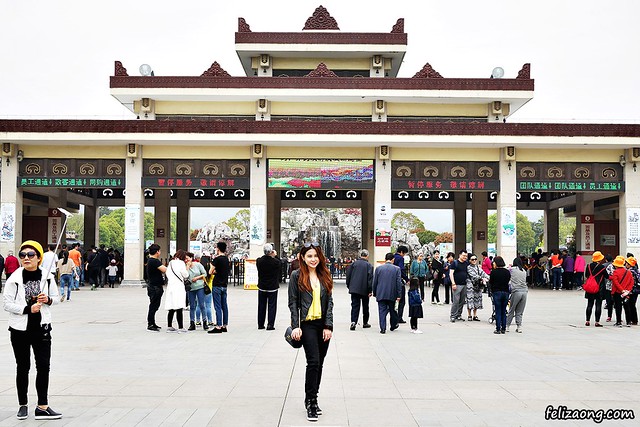






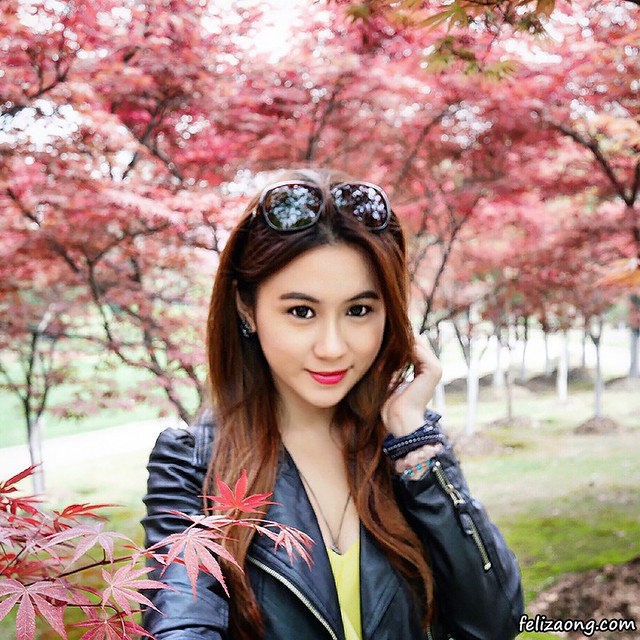




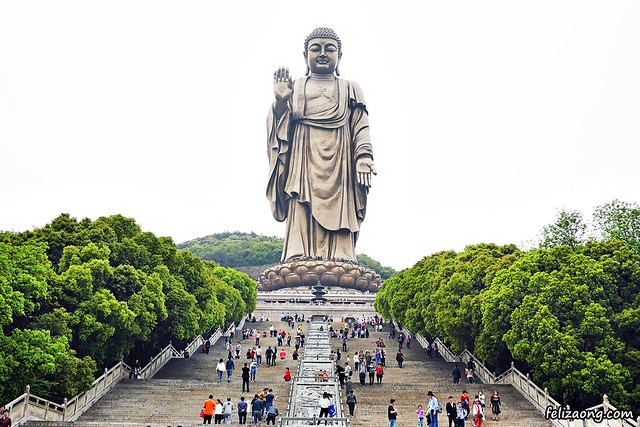
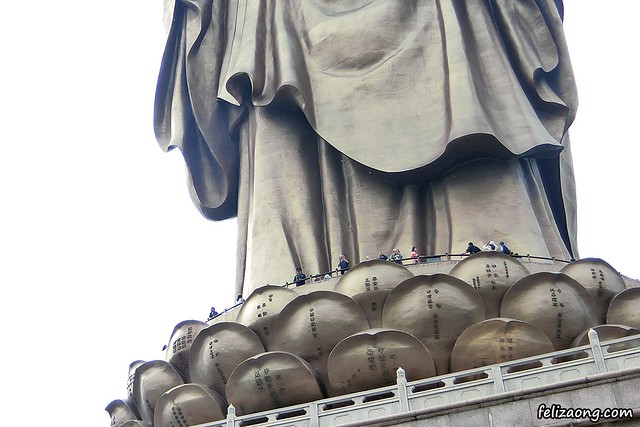










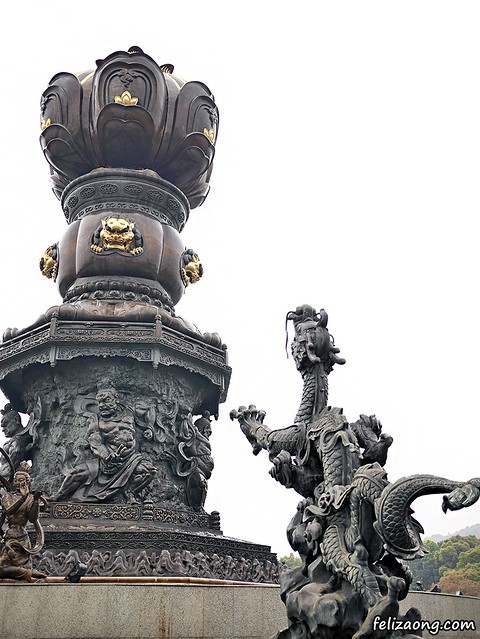


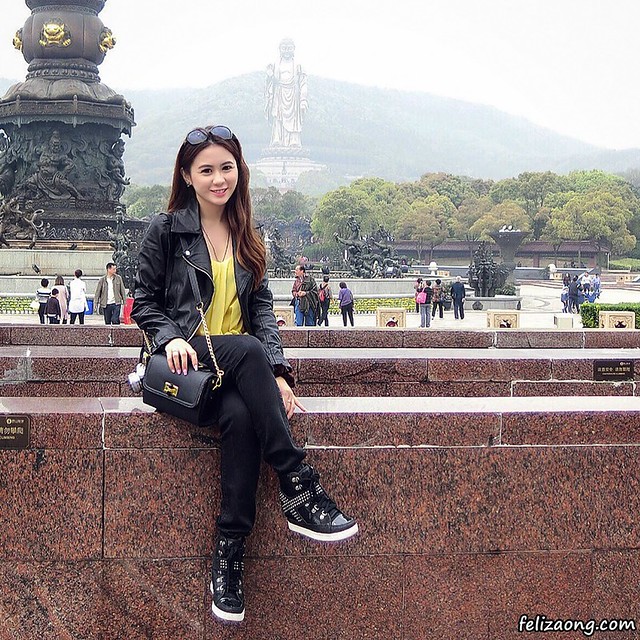




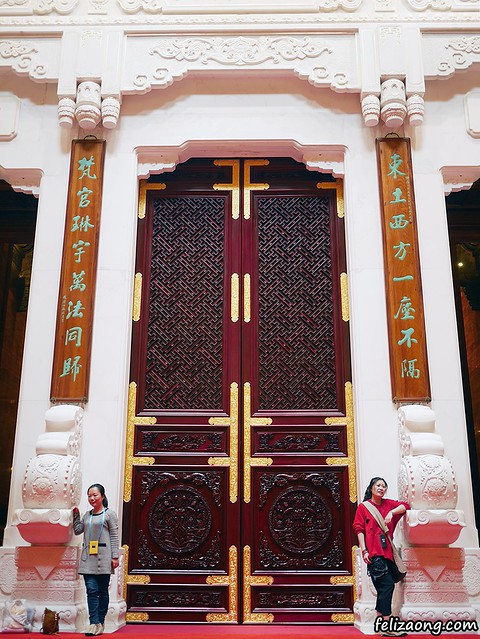




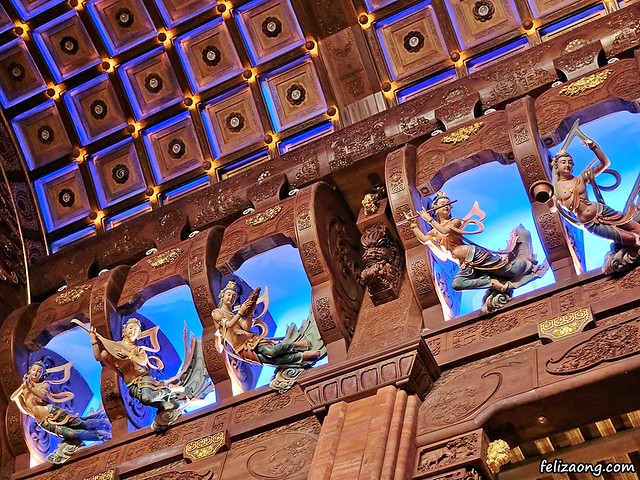








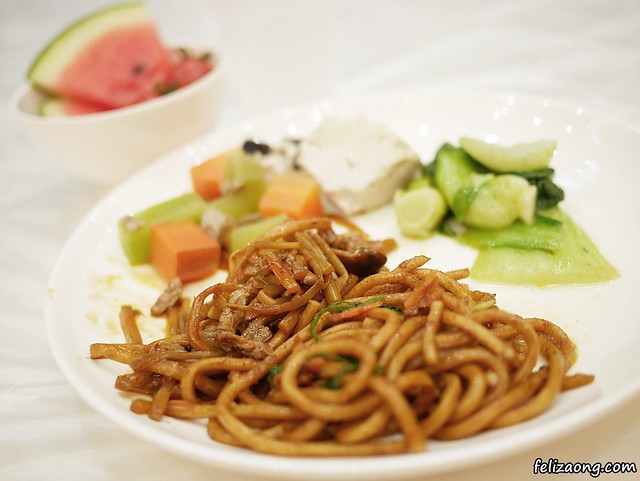

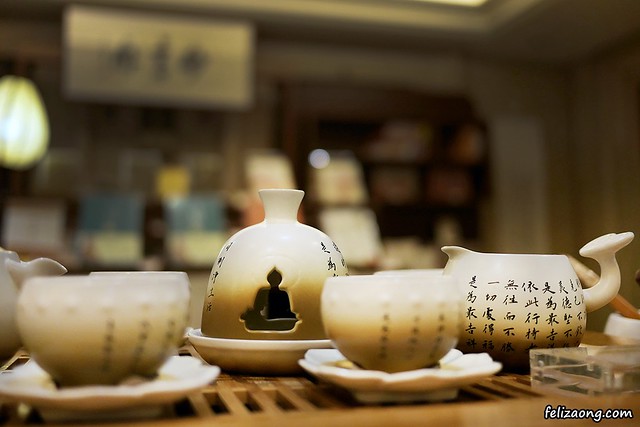

















No Response to " From Singapore to Wuxi with Tigerair "
Post a Comment